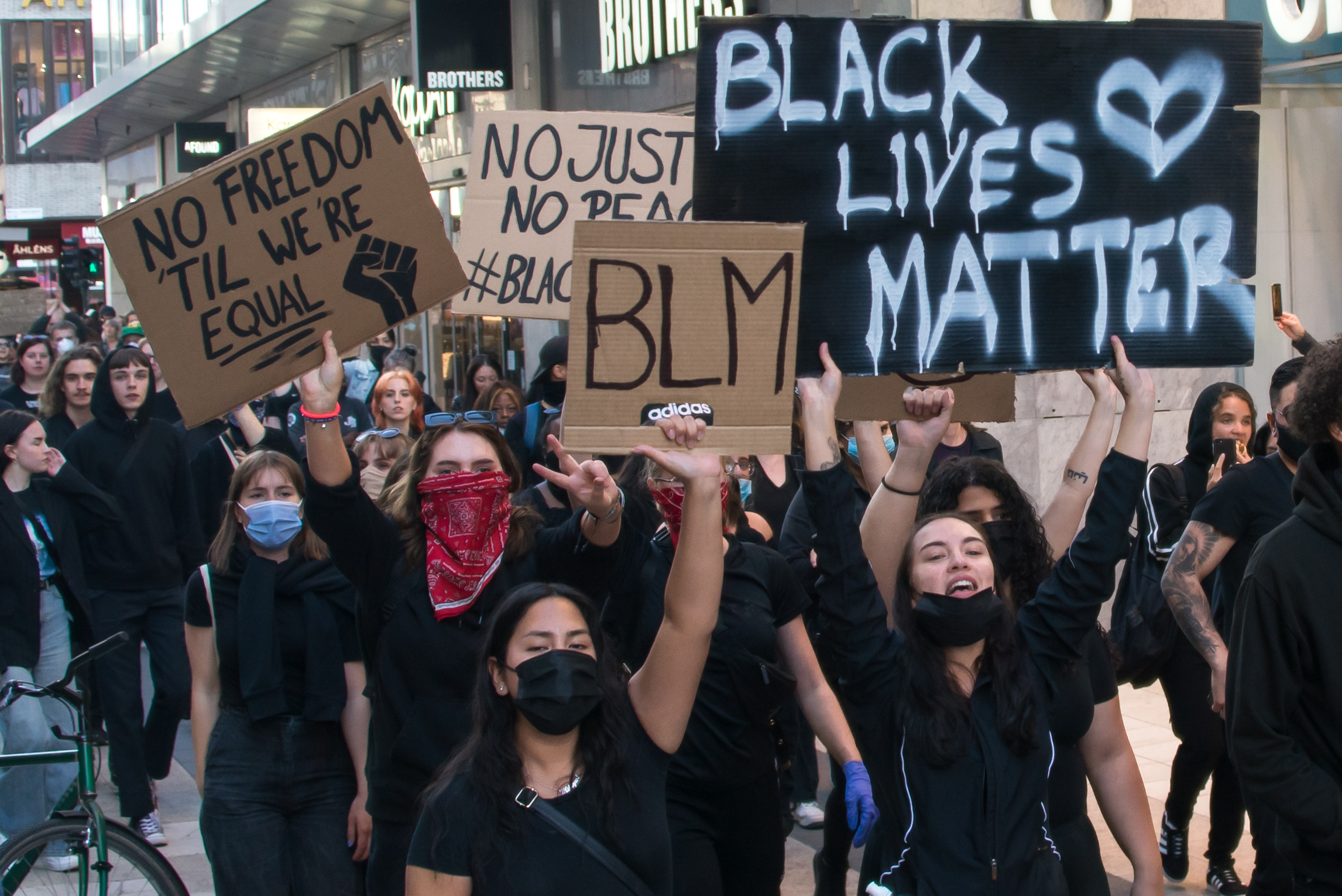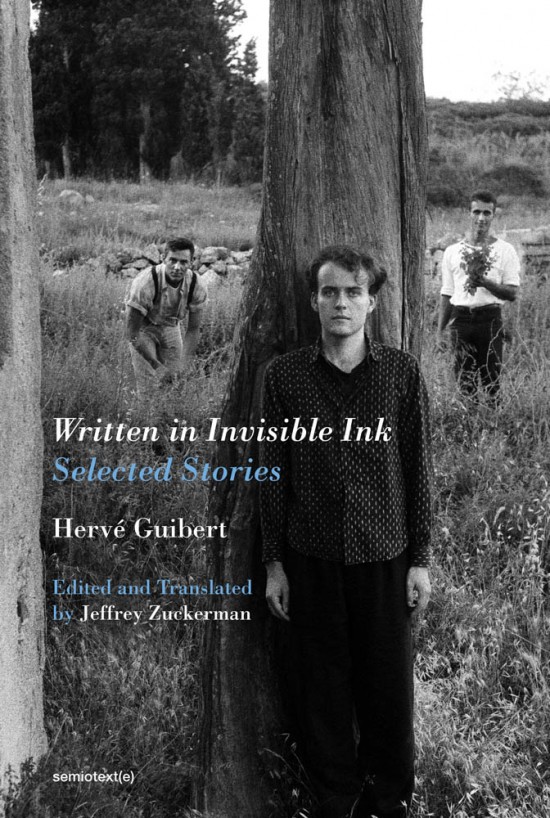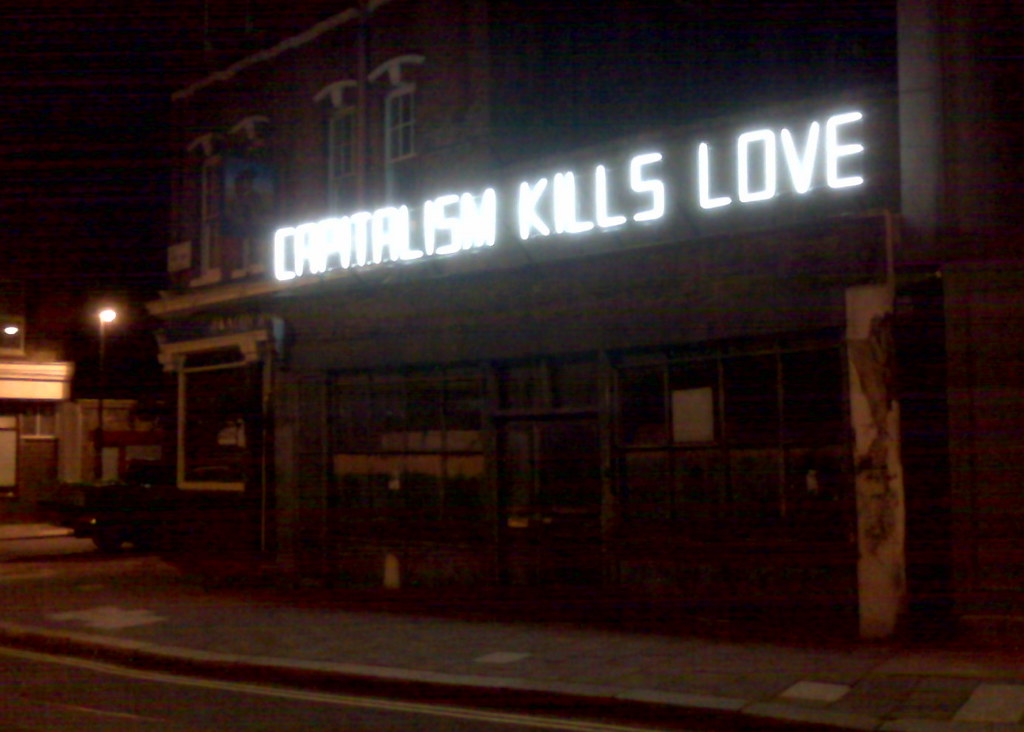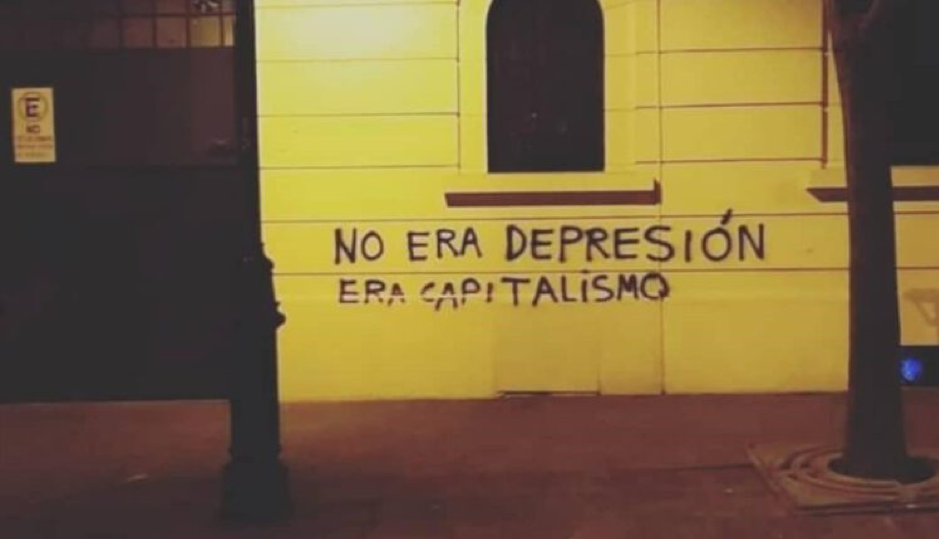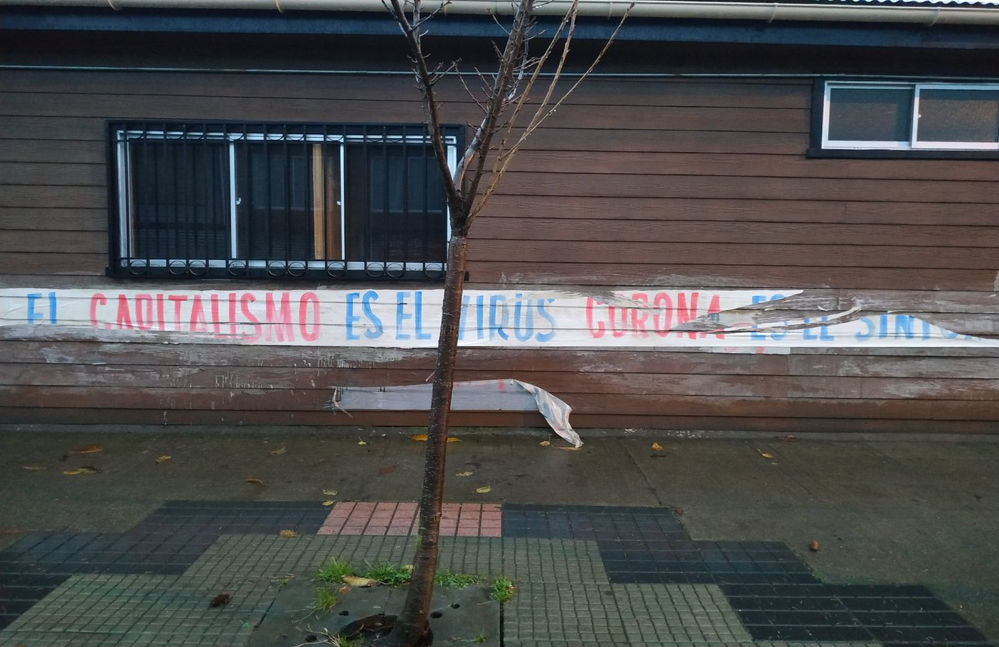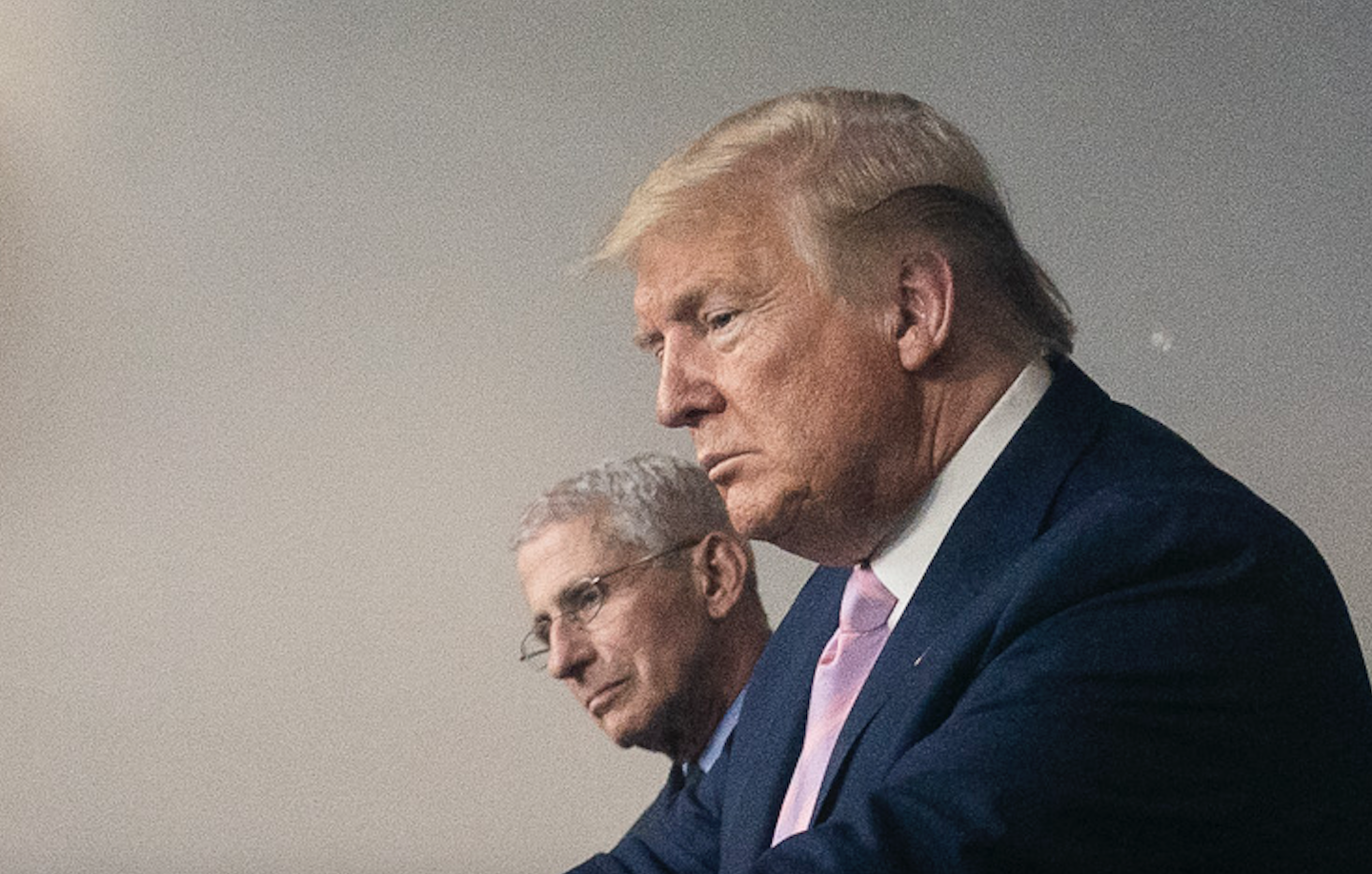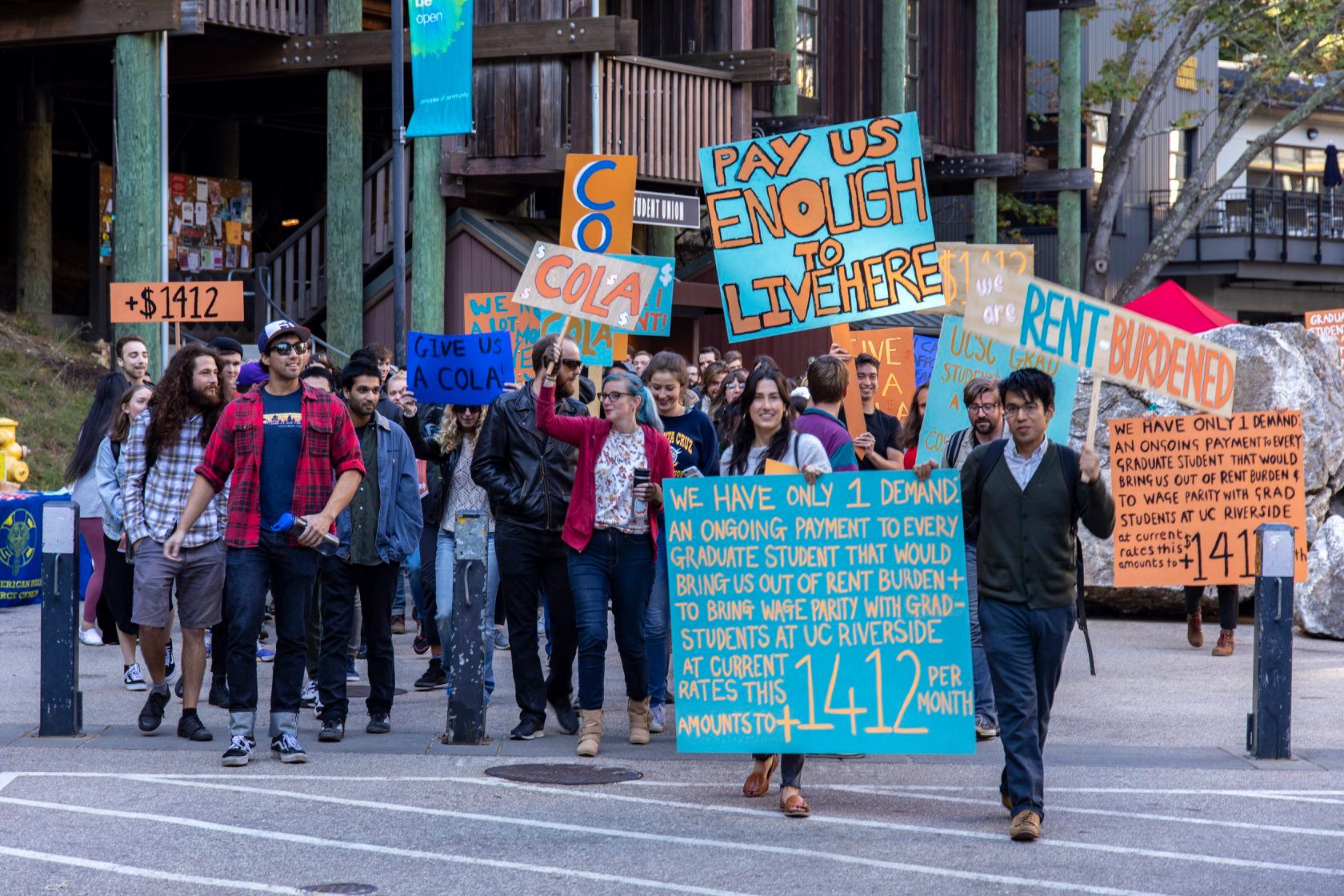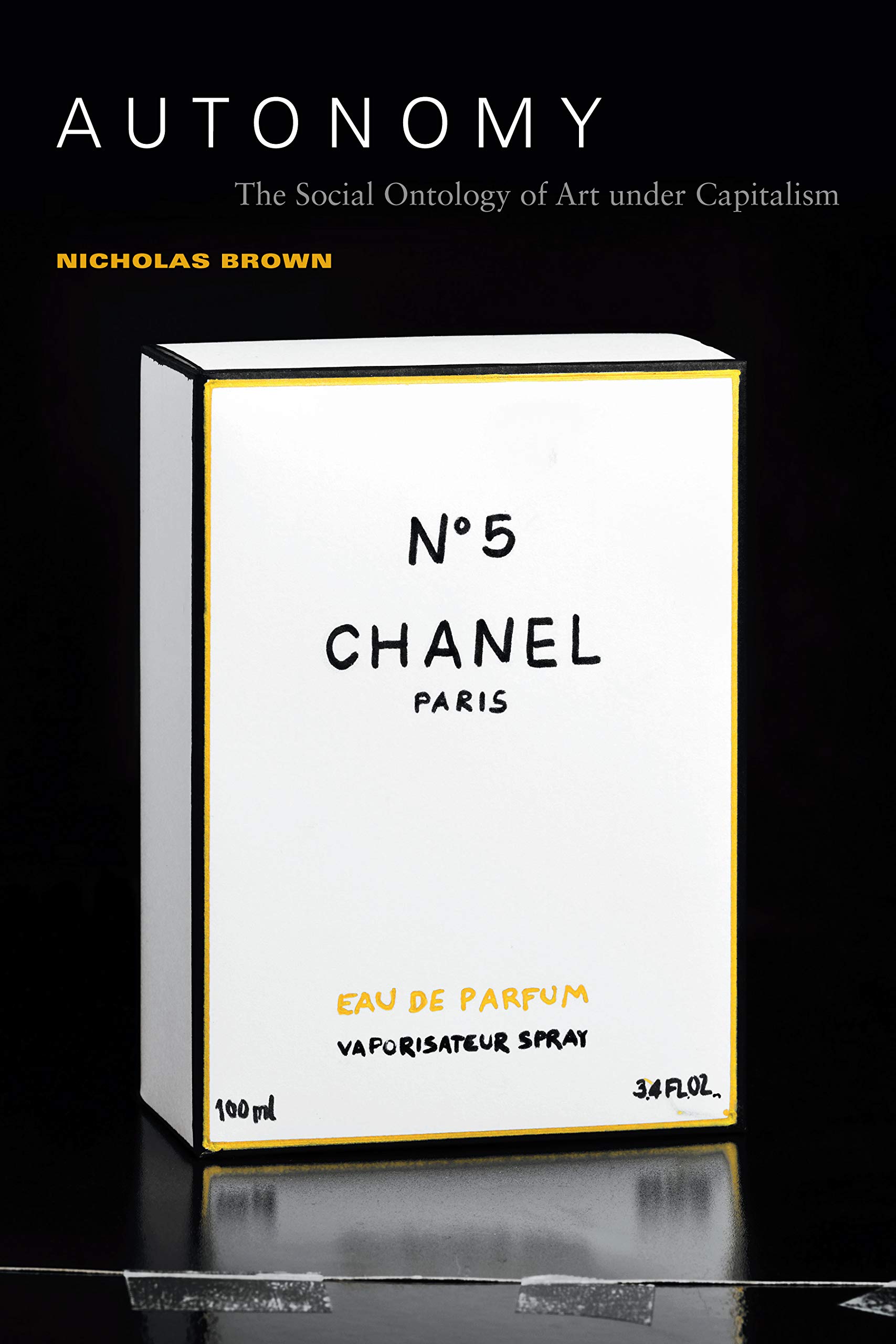This essay is a part of the COVID-19 dossier, edited by Arne De Boever.
by Chad Kautzer
“What you’re seeing and what you’re reading is not what’s happening.”
– President Donald J. Trump, July 24, 2018
In the midst of the coronavirus pandemic, we have witnessed how autocrats can effortlessly dismiss dire public health news, regardless of its factual basis, and disparage its messengers or even smear them as treasonous without reservation. Such reactions undermine public health and threaten the researchers and practitioners generating knowledge in its service. Yet, however demoralizing it may be to witness the present disregard for public health as well as the belittlement and even endangerment of public health advocates, there are lessons to be learned about authoritarianism and the ways we can oppose it.[1]
Trust in public health researchers and practitioners derives not from their supposed objectivity or claims to certainty, but from a commitment to transparency, an openness to critique and revision, and the promotion of health equity in the face of economic and sociodemographic disparities. As producers of credible knowledge in the lab or in the field, they earn a form of authority we call epistemic. To autocrats, who consider their own political authority to be subject to neither critique nor limit—Trump, for example, recently claimed that his authority is “total”—epistemic authority represents an unwelcome check, because it can raise legitimate questions about their policies and assertions. Attacks on journalists, academics, and civil and human rights organizations are similarly motivated by the autocrat’s desire to undermine or appropriate their various kinds of authority. To this end, these groups are often described as “elites” or “enemies of the people” to separate them from the “real people” whom the autocrat is said to personify.
Autocratic regimes do, of course, rely on expert knowledge, but vigorously police them to ensure that such expertise does not contradict the leader or erode trust in the authoritarian relations, and alternate epistemic universe, they cultivate. This task becomes difficult in times of crisis, when autocrats feel compelled to demonstrate absolute authority, yet solutions to complex problems call for input from a plurality of voices (including those most impacted), open and critical deliberation, and public trust.[2] Autocrats are therefore engaged in a battle on multiple fronts: confronting public crises, while simultaneously assailing non-political forms of authority that could challenge them.
Autocratic Tactics Against Public Health Advocates
When the crisis is a public health emergency, it is public health researchers and practitioners who gain public prominence and in turn the autocrat’s covetous wrath. The autocrat employs three identifiable tactics in his campaign against the epistemic authority of others, namely, those of delegitimizing, silencing, and usurping.[3] The tactic of delegitimizing public health advocates is pursued through spurious accusations and public denigration. It is often combined with, and said to justify, the second tactic, namely, silencing through threats, removal, incarceration, or even death.
At the beginning of the pandemic, indeed, before the novel coronavirus had a name or was deemed to have caused a pandemic, there was the tragic case of Dr. Li Wenliang in Wuhan. It was early January of this year when the Chinese government attempted to delegitimate and silence Dr. Wenliang, a 33-year-old ophthalmologist. Late last year, Dr. Wenliang alerted fellow doctors about several patients with coronavirus infections, although the virus strain was unclear. He recommended his colleagues and their families take precautions.
Within days, Dr. Wenliang was publicly accused of spreading rumors, detained, and threatened with prosecution. Police from the Wuhan Public Security Bureau made him sign a letter stating that he made “false comments,” had “severely disturbed the social order,” and must promise to never do it again. He returned to work and contracted the virus, but days before he died on February 3, he publicly shared the letter they made him sign, sparking national outrage. In an interview before his death, Dr. Wenliang said “I think there should be more than one voice in a healthy society, and I don’t approve of using public power for excessive interference.”[4]
For the past several years, Turkey’s autocratic President, Recep Tayyip Erdoğan, has used delegitimizing and silencing tactics against tens of thousands of academics, scientists, journalists, doctors, artists, and activists, labeling them terrorists or terrorist sympathizers with the help of anti-terrorism legislation Amnesty International calls “vague and widely abused in trumped up cases.”[5] Individuals have lost their jobs, their public platforms, and their personal freedom.[6]
Dr. Bülent Şık, for example, was a deputy director at the Food Safety and Agricultural Research Center at Akdeniz University, but fired from his position and indicted for participating in terrorist propaganda by signing an Academics for Peace petition. He had recently completed years of research for the Ministry of Health measuring environmental pollutants in several regions of Turkey and found widespread and serious risks to public health. When he attempted to alert the public to the danger in a series of newspaper articles, he was sentenced to 15 months in prison. During the coronavirus pandemic, doctors Güle Çınar and Yusuf Savran were detained and made to issue public apologies after their statements about the coronavirus were deemed inconsistent with the official state line.[7] Most recently, public health specialist and member of the Turkish Medical Association COVID-19 Monitoring Group, Prof. Kayıhan Pala, is under investigation for stating that the number of infections and fatalities in the Turkish city of Bursa is higher than publicly reported.[8]
Brazil’s neofascist president, Jair Bolsonaro, has employed all three tactics against health care officials at a time when the country has the second highest number of coronavirus infections and deaths in the world. He has ridiculed warnings by medical experts, calling them “hysterical”; removed officials who advocated for evidence-based policies that contradicted his political imperatives; and recommended unproven remedies such as hydroxychloroquine as if he possessed specialized knowledge on the subject. “The virus is out there and we will have to face it, but like men, damn it, not kids,” he said at a public event, where he flouted the social distancing rules set by his then health minister, Luiz Henrique Mandetta, a medical doctor.
It was Mandetta’s social distancing policy and lack of support for Bolsonaro’s hydroxychloroquine remedy that led to the minister’s ouster.[9] In his farewell press conference, Mandetta urged Ministry of Health employees to not be afraid and to vigorously defend science. “Science is light,” he said, “and it is through science that we will find a way out of this.”[10] Mandetta’s replacement, Nelson Teich, also a physician, quit as health minister weeks later after opposing Bolsonaro’s continued push for hydroxychloroquine and his failure to consult with the Ministry of Health before reopening businesses.[11] Bolsonaro tested positive for COVID-19 in early July.
In Russia, which now has the third highest number of infections, police arrested Anastasia Vasilieva, a physician and head of the Alliance of Doctors, for speaking out about the government’s undercounting of coronavirus cases and the lack of personal protective equipment for health-care workers.[12] In Leningradskaya, Dr. Natalia Trofimova was fired after warning that a new ward for Covid-19 patients was not safe,[13] and in St. Petersburg journalist Tatiana Voltskaya was criminally charged for publishing an interview with a doctor about the lack of ventilators under a new law that forbids spreading “false information” about the coronavirus.[14] According to Sarah Clarke from the rights group Article 19, Russia’s new law “makes it easy for the authorities to suppress any data deviating from the official narrative and punish journalists and ordinary citizens for openly questioning the efficacy of official responses.”[15]
The authoritarian prime minister of Hungary, Viktor Orbán, was granted dictatorial powers under the auspices of fighting the pandemic in March of this year. As with Russia’s law against spreading “false information,” the law granting Orbán dictatorial power makes similar acts punishable by up to five years in prison. Political science professor László Bruszt aptly described it as “a real sword hanging over the head of doctors and journalists alike.”[16]
We recognize a similar autocratic playbook in Trump’s response to public health officials during the coronavirus pandemic, and in previous encounters with authoritative knowledge concerning economic, military, intelligence, and environmental issues. Trump began by controlling or silencing the message from physicians and scientists at the Center for Disease Control (CDC) and the Department of Health and Human Services (HHS), insisting all public messaging be done through the Coronavirus Task Force press briefings. He then replaced the head of the task force, HHS Secretary Alex Azar, with Vice President Mike Pence, a sycophant who famously stays on message.[17] Having consolidated the public communications from relevant government agencies and scientists in the task force, Trump then took over its press briefings. He saturated them with self-congratulatory monologues, enemy lists, false claims, and untested cures as well as real-time spin of task force member statements that contradicted his own.[18]
Trump has also employed delegitimizing and silencing tactics against doctors and public health officials beyond the task force. After Christi A. Grimm, an inspector general at HHS, released a report on the shortages of testing and safety equipment at hospitals, Trump called the report “fake,” characterized her as an oppositional political operative, and is in the process of removing her.[19] Also removed was Dr. Rick Bright, director of HHS’s Biomedical Advanced Research and Development Authority, for, he says, limiting “the broad use of chloroquine and hydroxychloroquine, promoted by the Administration as a panacea, but which clearly lack scientific merit.” In order to combat the virus, he said, “science—not politics or cronyism—has to lead the way.” [20] Trump sought to undermine Dr. Bright’s credibility by describing him as “a disgruntled guy” and added that he “hadn’t heard great things about him either.”[21] The Food and Drug Administration has since issued a warning against the use of chloroquine and hydroxychloroquine and the United States Office of Special Counsel has determined that Dr. Bright’s removal likely violated the Whistleblower Protection Act.[22] In early July, Trump also began the process of withdrawing the U.S. from the WHO, which he claims “China has total control over.”[23]
The most sensational tactic Trump employs against public health researchers and practitioners is usurpation or the appropriation of their epistemic authority for himself. There is seemingly no end to the issues Trump, with his “very good brain” and familial relation to a “great super genius” MIT professor, claims to be the expert about. It has become the pastime of journalists to compile lists of them. While recently touring CDC headquarters in March, Trump told reporters “I really get it. People are surprised that I understand it. Every one of these doctors said, ‘How do you know so much about this?’ Maybe I have a natural ability.”[24] It was this perceived ability that informed his repeated claims that hydroxychloroquine is a risk-free cure for Covid-19 as well as his musings about the benefits of injecting disinfectants and “very powerful light” into the body.[25] While it is tempting to dismiss such hubris as simply the clownish flouting of convention, these are the typical antics of an autocrat.[26]
Tragically, an autocrat’s absurd proclamations can become self-fulfilling prophecies. As Catherine MacKinnon observes in Feminism Unmodified, “the beliefs of the powerful become proof, in part because the world actually arranges itself to affirm what the powerful want to see.”[27] This happens in part through an actual changing of the world. Hours after Trump’s son-in-law Jared Kushner publicly mischaracterized the National Strategic Stockpile of medical supplies for health emergencies as “our stockpile,” i.e. for the federal government and not the states, the official mission statement on the website of the National Strategic Stockpile was edited to turn Kushner’s lie into the truth.[28] And it happens in part through changing the appearance of the world, as when Trump altered a National Weather Service map with a marker to lazily substantiate his misstatement about the path of a hurricane.[29] “Populists are not greatly concerned with the subtleties of empirical observation,” writes Federico Finchelstein in From Fascism to Populism in History, “but instead direct their attention toward reworking, even reinventing, reality in accordance with their varied ideological imperatives.”[30]
Epistemic Authoritarianism
The autocrat’s desire to undermine and appropriate the epistemic authority of others is more than a defensive posture. Delegitimizing, silencing, and usurping tactics are not merely deployed to disarm particular threats. The tendency is rather to develop what we might call an epistemic authoritarianism in which “truth” and “reality” are, to the greatest extent possible, authored by the autocrat and their surrogates. The autocrat encourages their supporters, who now constitute “the people,” to not only reject particular facts and theories, but to challenge the very processes of rational reflection and deliberation as well. This creates an epistemic vacuum that is filled by the will and myths of the autocrat, and increases the chances that followers will engage in unreflective or spontaneous acts of violence.[31]
In their 1949 study of fascist tendencies in the U.S., Prophets of Deceit, Leo Löwenthal and Norbert Guterman describe the fascist leader as seeking to “increase his audience’s disorientation by destroying all rational guideposts.”[32] This allows more emotive and irrational forces to reign and “truth” to operate as something more akin to loyalty. Or as Finchelstein writes, truth is “reformulated as a matter of ideological, often visceral, faith, rather than as a function of observation, rational discernment, and corroboration.”[33] Autocrats achieve this by mobilizing long present authoritarian values and structures that already constrain who may be publicly recognized as credible. They foment distrust through a deluge of outlandish lies and conspiracy theories, particularly those attributing sinister motives to scientists, academics, and journalists, that play on anti-Semitic, racist, and nativist tropes.
Eventually, the sheer quantity of delusional nonsense produces a qualitative shift: a generalized suspicion of all potential bearers of epistemic authority. “The credibility of any source, indeed the very idea of verified knowledge itself is thus thrown into question,” writes Sophia Rosenfeld in Democracy and Truth.[34] The exception is, of course, the autocrat himself, whose self-proclaimed unique insight is incorruptible and thus becomes the only remaining means for the people to access reality itself.[35] This hegemony silences the plurality of voices and the processes of critique and revision. “He warns his audience,” write Löwenthal and Guterman, “that it needs his guidance in the bewildering situation in which it finds itself.”
Out of this fog a narrative emerges: Conditions, we are told, were awful before the autocrat came to power, i.e. the people were victimized and humiliated by their enemies both foreign and domestic, but now everything is better than it has ever been.[36] The autocrat is unsparing in the Pollyannaish, self-congratulatory assessments of their own performance. Like a children’s game, enemies are conjured up and swiftly defeated before dinner without the pretense of evidence. The autocrat claims they are relentlessly persecuted by shadowy forces and political enemies because they fight for “the people,” yet the autocrat always triumphs in the end and thus so too do the people, at least vicariously.[37]
The power of these fictions does not depend on the intended audience mistaking them for empirical truths or even sincere assertions. These are no longer conditions for belief within epistemic authoritarianism.[38] The autocrat divides the world into friends and enemies, leans heavily on ritualistic performances, and titillates followers by transgressing social norms they consider oppressive, such as prohibitions on racism, sexism, and religious bigotry.[39] Innuendo and empty signifiers (e.g. “Just look at what’s happening”) permit followers to fill in the blanks with their white supremacist, anti-Semitic, and misogynist fantasies. Resentment over the unfulfilled promises of an economic system that leaves needs unfulfilled and renders life more precarious is channeled into a rejection of democracy. “Because it does not fulfill what it promises,” writes Theodor Adorno in The Authoritarian Personality, “they regard it as a ‘swindle’ and are ready to exchange it for a system which sacrifices all claims to human dignity and justice.”[40] The autocrat’s categorical assertions about the inherently corrupt nature of political opponents, scientists, doctors, journalists, and activists, permit followers to reject outright even the most mundane (a posteriori) claims, from weather reports to infection rates. This active ignorance is difficult to overcome, writes José Medina in The Epistemology of Resistance, for people “would have to change so much of themselves and their communities before they can start seeing things differently.”[41]
Followers prefer the gratification of the fiction: the sense of belonging; the relief and self-righteousness of a “Truth” not subject to revision; the confirmation of their victim status; the clear identification of enemies; and the euphoric release of aggression and self-control when the autocrat actually or symbolically brutalizes these enemies in their name and encourages them to do the same.[42] This is the deeply seductive dimension of epistemic authoritarianism and why empirical evidence and reasonable critiques prove ineffective at generating skepticism among adherents.[43] In this way it resembles religious faith, which is why the autocrat can so easily appropriate religious symbolism and in turn divine authority. This was recently and poignantly demonstrated by the violent removal of peaceful protestors near the White House to enable Trump’s walk with an all-white entourage of military, cabinet, and family members to St. John’s Episcopal Church where he raised a bible overhead for the cameras. He made no statements and read no scripture. It was pure symbolism: the wedding of lawless state violence and white Christianity in the autocrat leader.
Resistance and Solidarity
We are often shocked by the brazen lies and then confounded and demoralized that the autocrat pays no political price for them. “The need to pay constant attention to the lies is exhausting,” writes Masha Gessen in Surviving Autocracy, “and it is compounded by the feeling of helplessness in the face of the ridiculous and repeated lies.”[44] This feeling of helplessness is understandable. However, if we remember that epistemic authoritarianism offers not only “alternative facts,” as Trump advisor Kellyanne Conway called them, but an alluring sense of belonging, vindication, and superiority, then we can manage our expectations and identify forms of resistance.
A first step is understanding the threat and formulating a critique. Epistemic authoritarianism is, we know, characterized by an actively desired fiction manifest in the social practices and identities of the autocrat’s followers. An important means of actualizing this fiction in a group, and thus constituting the identity of the group itself, is the performance of rituals at, for example, political rallies where attendees experience what Adorno describes as the “loosening of self-control, the merging of one’s impulses with a ritual scheme.”[45] These rituals function to elicit and direct hostility toward enemies said to threaten “the people” in one way or another. Finally, we recognize the autocrat’s tactics of delegitimizing, silencing, and usurping, which are used against those whose epistemic authority represents a threat to the autocrat’s power.
A second important step is considering the extent to which existing forms of knowledge production are amenable or antagonistic to authoritarianism. When Trump told a group of veterans “What you’re seeing and what you’re reading is not what’s happening,”[46] we were reminded of Winston in George Orwell’s book 1984, who was faced with a regime telling him “to reject the evidence of your eyes and ears.” Winston ultimately concluded that the most basic freedom is “the freedom to say that two plus two make four.” There is wisdom and benefit in this, for ourselves at least, despite neither mathematical truths nor empirical fact-checking being effective tools against committed authoritarians. Knowledge production is, however, made more resilient to authoritarian (and technocratic) encroachment to the degree it relies on critical, reflexive, and democratic methods of inquiry and problem-solving, which are also more successful in addressing health and other social inequities.[47]
Most urgently, however, is the need for us to defend the researchers and practitioners currently being targeted because their work undermines the narratives, myths, and potentially the authority of autocrats. Recent examples include the widespread outrage in China over the targeting of Dr. Li Wenliang, which rattled its authoritarian government as calls for justice rose in defiance of state censors. The government was forced to investigate the accusations against Dr. Wenliang and quickly concluded a mistake was made. A rare apology was issued and the officers involved in silencing Dr. Wenliang have themselves been reprimanded. In Turkey, Dr. Bülent Şık was originally indicted for several crimes, including supporting terrorism, but public opposition led to the most serious charges being dropped. He was convicted of one charge, but has since appealed his 15-month prison sentence. International solidarity campaigns are calling for the Turkish Court of Appeals to overturn it.[48]
These and similar campaigns can be replicated, expanded, and integrated to make the defense of public health advocates, not to mention academics, journalists, writers, and artists, a central commitment within a political culture of epistemic resistance. Existing international organizations, which have experience providing legal support and organizing solidarity campaigns, need financial support and assistance in amplifying their efforts. Unions, professional organizations, colleges, and universities can use their resources to support those whose careers or lives are threatened as well as suspend any relations they have with the responsible institutions or regimes. We can also use the public platforms available to us to network, organize, and promote political actions. To be sure, these efforts alone will not defeat epistemic authoritarianism, but building a culture of epistemic resistance with solidarity at its core would contribute to this ultimate goal while also serving as a desirable example of a possible future.
Chad Kautzer is associate professor of philosophy at Lehigh University. He is the author of Radical Philosophy: An Introduction (Routledge), coeditor of Pragmatism, Nation, and Race: Community in the Age of Empire (Indiana), and is currently writing a book about race, political violence, and community defense. You can find more of his publications here. Kautzer works on academic solidarity campaigns and administers the page International Solidarity with Academics in Turkey.
[1] I’d like to thank Jenny Weyel, Nitzan Lebovic, Daniel Loick, Eric Schliesser, Eylem Delikanlı, Steve Vogel, and Sirry Alang for their feedback on an earlier version of this essay.
[2] The authors of a post-SARS study for the World Health Organization conclude “most measures for managing public health emergencies rely on public compliance for effectiveness. This requires that the public trust not only the information they are receiving, but also the authorities who are the source of this information, and their decision-making processes.” P. O’Malley, J. Rainford, and A. Thompson, “Transparency during public health emergencies: from rhetoric to reality,” Bull World Health Organ 87 (2009): 615.
[3] “Post-truth is, at heart,” writes Sophia Rosenfeld, “a struggle over people as holders of epistemic authority and over their different methods of inquiry and proof in an intensely partisan era.” Sophia Rosenfeld, Democracy and Truth (Philadelphia: University of Pennsylvania Press, 2018), 37.
[4] https://www.caixinglobal.com/2020-02-06/after-being-punished-by-local-police-coronavirus-whistleblower-vindicated-by-top-court-101509986.html
[5] “Turkey: Imprisoned journalists, human rights defenders and others, now at risk of Covid-19, must be urgently released,” Amnesty International, March 30, 2020 https://www.amnesty.org/en/latest/news/2020/03/turkey-imprisoned-journalists-human-rights-defenders-and-others-now-at-risk-of-covid-19-must-be-urgently-released/
[6] With the coronavirus spreading rapidly in Turkey’s prisons, Erdoğan is now engaging in a cynical form of necropolitics, which subjects those who represent checks on his authority to an increased chance of life-threatening infection. On April 13, Erdoğan released nearly one-third of Turkey’s prison population to minimize their chances of contracting the virus, yet political prisoners, including doctors, journalists, and academics, were excluded.
[7] Isaac Chotiner, “The Coronavirus Meets Authoritarianism in Turkey,” The New Yorker, April 3, 2020 https://www.newyorker.com/news/q-and-a/the-coronavirus-meets-authoritarianism-in-turkey; “Turkish doctors issue apologies for coronavirus statements,” Ahval, March 30, 2020, https://ahvalnews.com/turkey-coronavirus/turkish-doctors-issue-apologies-coronavirus-statements
[8] http://m.bianet.org/english/health/226705-uludag-university-launches-investigation-against-prof-kayihan-pala
[9] “The ‘Ostrich Alliance’: the leaders denying the coronavirus threat,” Financial Times, April 16, 2020. https://www.ft.com/content/974dc9d2-77c1-4381-adcd-2f755333a36b
[10] Dom Phillips, “Bolsonaro fires popular health minister after dispute over coronavirus response,” The Guardian, April 16, 2020, https://www.theguardian.com/world/2020/apr/16/bolsonaro-brazil-president-luiz-mandetta-health-minister
[11] https://www.nytimes.com/2020/05/15/world/americas/brazil-health-minister-bolsonaro.html
[12] https://www.nytimes.com/2020/04/03/world/europe/russian-virus-doctor-detained.html
[13] https://www.npr.org/2020/05/01/848932901/health-care-workers-in-russia-pay-deadly-price-fighting-covid-19
[14] https://www.thenation.com/article/world/free-speech-russia-coronavirus/
[15] https://www.article19.org/resources/russia-stop-restrictions-on-media-and-independent-journalists-under-the-cover-of-coronavirus/
[16] László Bruszt, “Hungary’s Disease Dictator,” Project Syndicate, April 16, 2020, https://www.project-syndicate.org/commentary/hungary-covid19-viktor-orban-pandemic-dictatorship-by-laszlo-bruszt-2020-04
[17] Pence’s appointment on February 26 was a response to public comments made by Dr. Nancy Messonnier, the director of the CDC’s National Center for Immunization and Respiratory Diseases, at a CDC press briefing the day before. “Disruption to everyday life might be severe,” she told reporters. “It’s not a question of if this will happen but when this will happen and how many people in this country will have severe illnesses.” The statement was accurate, but incongruent with Trump’s fantastical, upbeat assessments. Dr. Messonnier did not appear in public again and the CDC press briefings were subsequently shut down in early March.
[18] In one memorable exchange, Trump claimed that CDC director Robert Redfield was “misquoted” when he told a reporter “There’s a possibility that the assault of the virus on our nation next winter will actually be even more difficult than the one we just went through.” Trump called the reporting “fake news” and insisted Redfield explain what he really said. “I’m accurately quoted,” Redfield responded, and then tried drawing a distinction between “more difficult” and “worse,” the word used in the article’s title. Redfield came under fire in July for promising to change the CDC guidelines for reopening schools hours after public criticism from President Trump that existing guidelines were too stringent.
[19] https://www.washingtonpost.com/politics/trump-replaces-hhs-watchdog-who-found-severe-shortages-at-hospitals-combating-coronavirus/2020/05/02/6e274372-8c87-11ea-ac8a-fe9b8088e101_story.html
[20] https://edition.cnn.com/2020/04/22/politics/read-whistleblower-vaccine-development/index.html
[21] https://www.nytimes.com/aponline/2020/05/08/us/politics/ap-us-virus-outbreak-whistleblower.html
[22] https://www.nytimes.com/2020/05/08/us/coronavirus-updates.html
[23] https://www.whitehouse.gov/briefings-statements/remarks-president-trump-actions-china/
[24] https://www.whitehouse.gov/briefings-statements/remarks-president-trump-tour-centers-disease-control-prevention-atlanta-ga/
[25] https://www.whitehouse.gov/briefings-statements/remarks-president-trump-vice-president-pence-members-coronavirus-task-force-press-briefing-31/
[26] Autocrats are “taken seriously” writes Adorno, precisely “because they risk making fools of themselves.” Theodor Adorno, “Anti-Semitism and Fascist Propaganda” (1946), in The Stars Down to Earth and Other Essays on the Irrational in Culture, edited by Stephen Crook (New York: Routledge, 1994), 166.
[27] Catherine MacKinnon, Feminism Unmodified: Discourses on Life and Law (Cambridge: Harvard University Press, 1988), 164.
[28] https://www.snopes.com/fact-check/stockpile-website-change-kushner/
[29] https://www.npr.org/2019/09/04/757586936/trump-displays-altered-map-of-hurricane-dorians-path-to-include-alabama
[30] Federico Finchelstein, From Fascism to Populism in History (Berkeley: University of California Press, 2017), xxxvii.
[31] “In fascism,” writes Finchelstein, “the ultimate form of truth required no corroboration with empirical evidence: rather, it emanated from an intuitive affirmation of notions that were supposed to be expressions of transhistorical myths. The leader embodied these myths.” Federico Finchelstein, A Brief History of Fascist Lies (Berkeley: University of California Press, 2020), 26.
[32] Leo Löwenthal and Norbert Guterman, Prophets of Deceit: A Study of the Techniques of the American Agitator (New York: Harper & Brothers, 1949), 6.
[33] Finchelstein, From Fascism to Populism in History, 250.
[34] Rosenfeld, Democracy and Truth, 16-17.
[35] “No absolute ruler can be satisfied today with dominion over political life alone,” writes Michael Polanyi. “Dictatorship can become real today only by eradicating the whole autonomous cultural life with all its widespread popular roots” Michael Polanyi, “The Growth of Thought in Society,” Economica, Vol. 8, No. 32 (Nov., 1941): 443. I thank Eric Schliesser for pointing me toward Polanyi’s critique of authoritarianism.
[36] Jean-Paul Sartre famously used Orbán’s Stalinist predecessor in Hungary, Mátyás Rákosi, to illustrate how terror arises from the “everything was always going well” ideology of an autocrat. Prime Minister Rákosi had ordered the construction of a subway in Budapest in the 1950s. When, writes Sartre, “the engineers came to explain to Rakosi, after a few months’ work, that the subsoil of Budapest was not suitable for the construction of a metro, he had them thrown into prison.” Jean-Paul Sartre, Critique of Dialectical Reason, Vol. 2, edited by Arlette Elkaïm-Sartre and translated by Quinton Hoare (New York: Verso, 1991), 173.
[37] Löwenthal and Guterman describe the fascist agitator as “a bullet-proof martyr who despite his extraordinary sufferings always emerges victorious over his enemies” Löwenthal and Norbert Guterman, Prophets of Deceit,119.
[38] “The ideal subject of totalitarian rule is… people for whom the distinction between fact and fiction (i.e., the reality of experience) and the distinction between true and false (i.e., the standards of thought) no longer exist.” Hannah Arendt, The Origins of Totalitarianism (New York: Harcourt Brace & Company, 1973), 474.
[39] “They function vicariously for their inarticulate listeners by doing and saying what the latter would like to, but either cannot or dare not.” Adorno, “Anti-Semitism and Fascist Propaganda,” 166.
[40] Theodor W. Adorno, E. Frenkel-Brunswik, D. J. Levinson, and R. N. Sanford, The Authoritarian Personality (New York: Harper & Row, 1950), 678.
[41] José Medina, The Epistemology of Resistance: Gender and Racial Oppression, Epistemic Injustice, and Resistant Imagination (New York: Oxford University Press, 2013), 57-58
[42] Fascist truth, writes Robert Paxton, “was whatever permitted the new fascist man (and woman) to dominate others, and whatever made the chosen people triumph.” Robert Paxton, The Anatomy of Fascism (New York: Knopf, 2004), 16.
[43] “Fascism was not a simple and hypocritical lie,” writes Finchelstein, “but a lived and believed experience both from above and from below. The creation of a fascist self through the internalization of fascist themes had multiple meanings, official ones as well as spontaneous instances of fascist perception…. In fascism, fiction displaced reality and became a reality.” Finchelstein, A Brief History of Fascist Lies, 21.
[44] Masha Gessen, Surviving Autocracy (New York: Riverhead Books, 2020), 164.
[45] Adorno, “Anti-Semitism and Fascist Propaganda,” 167. See Adorno: “It is not simply a reversion to older, primitive emotions but rather the reversion toward a ritualistic attitude in which the expression of emotions is sanctioned by an agency of social control.” Ibid.
[46] https://www.whitehouse.gov/briefings-statements/remarks-president-trump-veterans-foreign-wars-united-states-national-convention-kansas-city-mo/
[47] Rosenfeld, like Karl Popper, argues that the advantage of democratic methods is not that they produce better “empirical outcomes,” but that they allow for continual revision in a world without certainty. Rosenfeld, Democracy and Truth, 293.
[48] An open letter accepting signatures in support of Dr. Bülent Şık

